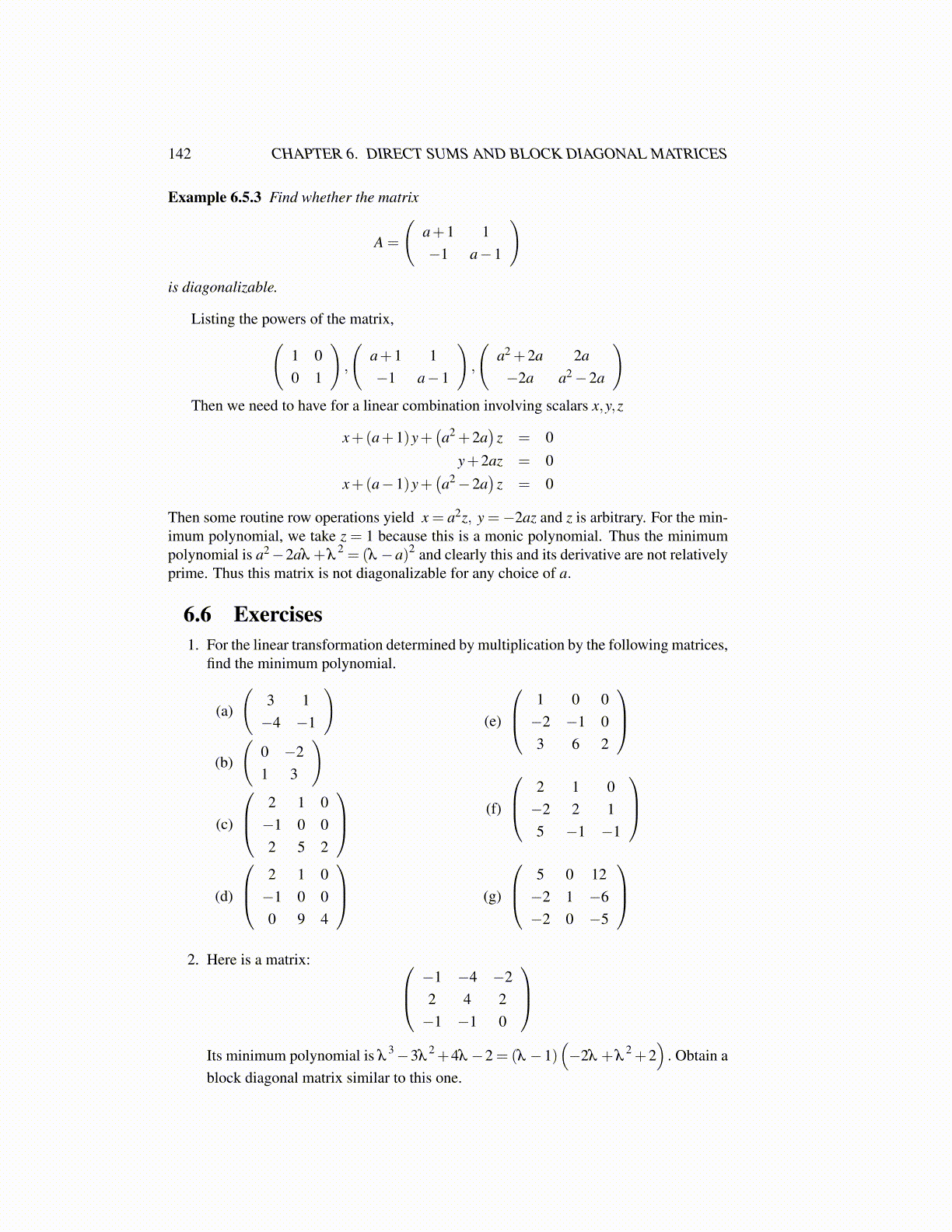
142 CHAPTER 6. DIRECT SUMS AND BLOCK DIAGONAL MATRICES
Example 6.5.3 Find whether the matrix
A =
(a+1 1−1 a−1
)is diagonalizable.
Listing the powers of the matrix,(1 00 1
),
(a+1 1−1 a−1
),
(a2 +2a 2a−2a a2−2a
)Then we need to have for a linear combination involving scalars x,y,z
x+(a+1)y+(a2 +2a
)z = 0
y+2az = 0x+(a−1)y+
(a2−2a
)z = 0
Then some routine row operations yield x = a2z, y =−2az and z is arbitrary. For the min-imum polynomial, we take z = 1 because this is a monic polynomial. Thus the minimumpolynomial is a2−2aλ +λ
2 = (λ −a)2 and clearly this and its derivative are not relativelyprime. Thus this matrix is not diagonalizable for any choice of a.
6.6 Exercises1. For the linear transformation determined by multiplication by the following matrices,
find the minimum polynomial.
(a)
(3 1−4 −1
)
(b)
(0 −21 3
)
(c)
2 1 0−1 0 02 5 2
(d)
2 1 0−1 0 00 9 4
(e)
1 0 0−2 −1 03 6 2
(f)
2 1 0−2 2 15 −1 −1
(g)
5 0 12−2 1 −6−2 0 −5
2. Here is a matrix: −1 −4 −2
2 4 2−1 −1 0
Its minimum polynomial is λ
3−3λ2 +4λ −2 = (λ −1)
(−2λ +λ
2 +2). Obtain a
block diagonal matrix similar to this one.